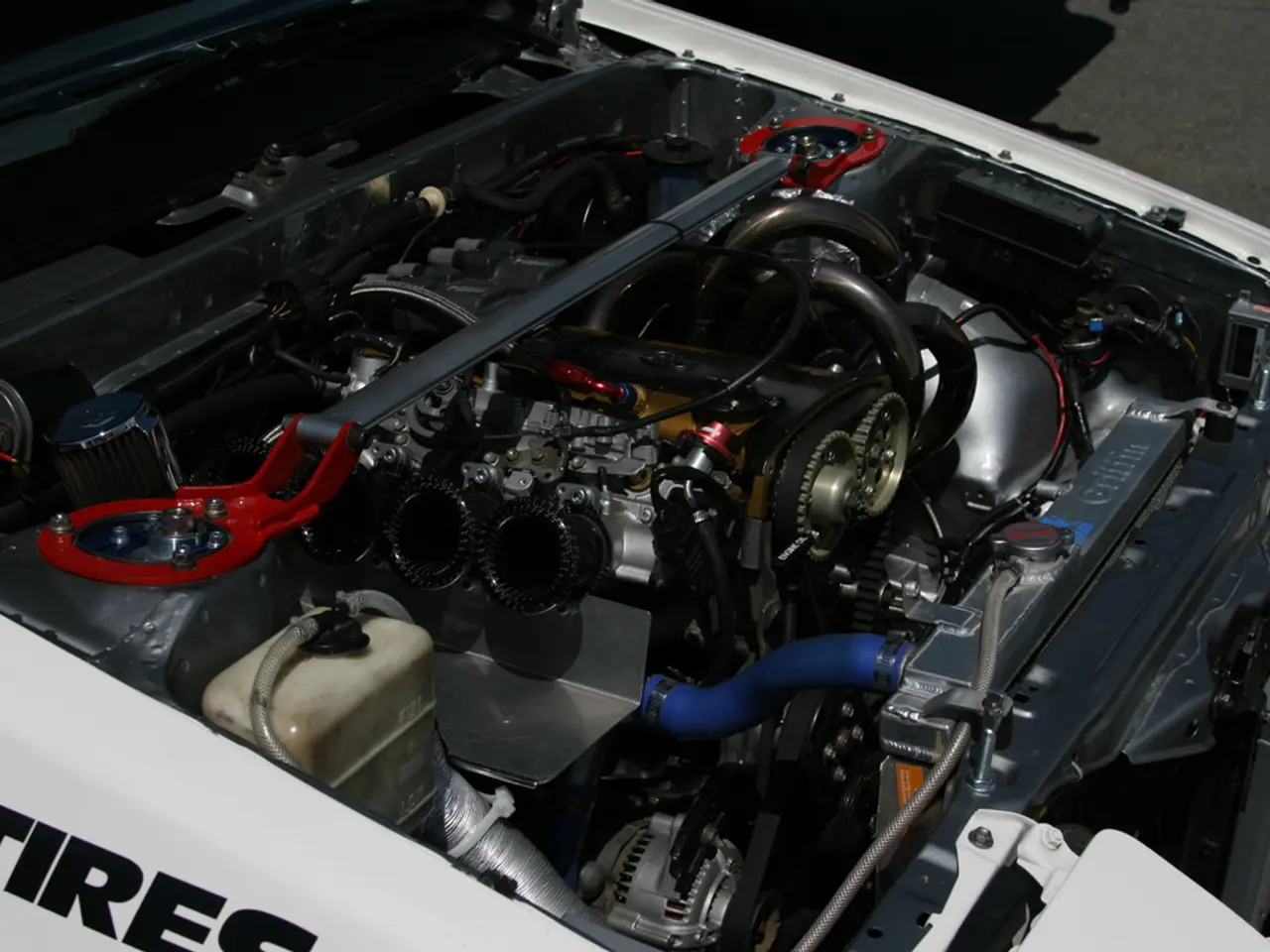Stashed Lithium Abundance in Disused Electric Vehicle Batteries Revealed as Surprising
In the ever-evolving landscape of the energy sector, a new, profitable niche is emerging: the recycling of lithium from used electric vehicle (EV) batteries. This shift, driven by rising EV adoption and advancements in recycling methods, is expected to expand significantly, with forecasts estimating a potential value of up to $52 billion by 2045 based on recovered materials like lithium, nickel, cobalt, and graphite [1].
This development offers a host of environmental benefits. Industrial-scale recycling emits less than half the greenhouse gases compared to mining new lithium and other materials. Furthermore, recycling uses only about one-fourth the water and energy of new mineral extraction, especially when powered by renewable energy sources [3]. By supporting a circular economy, lithium and other metals can be indefinitely recovered and reused with minimal performance loss, reducing the need for new mineral mining and supporting sustainable electromobility [3].
The economic benefits are equally compelling. Recycling helps build local and stable supply chains for critical battery materials, reducing dependence on geopolitically sensitive mining regions. Direct recycling technologies may produce cheaper recycled cathode materials, enhancing profitability. With over 30 million EVs on the road in 2025 and rising, the supply of end-of-life batteries is growing rapidly, creating increasing feedstock for recycling operations [1][2].
A study published in the Journal of Environmental Management suggests that leftover lithium in used batteries could be a potentially consistent, bountiful supply [4]. The researchers at Edith Cowan University (ECU) in Australia, including postdoctoral students Asad Ali and Sadia Afrin, propose that recycling lithium batteries could be a pragmatic, sustainable alternative to lithium mining [4]. Mining remains the dominant method for lithium recovery, but the researchers argue that its environmental impact should be reason enough to eventually move away from it [4].
The growth of this industry will need to align with technological advancements in industries that rely on lithium. The global lithium-ion battery market is projected to grow at an annual rate of 13% and consume roughly 1,600 kilotons of lithium by 2026 [2]. Shockingly, used lithium batteries retain nearly 80% of their lithium capacity, which is still very much usable [5].
In Australia, lithium battery waste could amount to 137,000 tons each year [6]. Recycling facilities could potentially have less environmental impact than mining, using 83% less energy and 79% less water [5]. Recycling processes produce around 61% less carbon than mining [5].
In conclusion, lithium recycling from EV batteries is both an environmental imperative and a market opportunity, fostering sustainability and economic growth in the expanding electric vehicle sector [1][3]. The market is supported by advanced recycling technologies moving to commercial scale worldwide [1]. As the world transitions towards a more sustainable future, the importance of recycling lithium from EV batteries cannot be overstated.
References:
[1] GreenBiz. (2021). The circular economy of lithium batteries: A new business model for the clean energy transition. Retrieved from https://www.greenbiz.com/article/circular-economy-lithium-batteries-new-business-model-clean-energy-transition
[2] Grand View Research. (2021). Global Lithium-Ion Battery Market Size, Share & Trends Analysis Report By Type, By Application, By Region And Segment Forecasts, 2021 - 2028. Retrieved from https://www.grandviewresearch.com/industry-analysis/lithium-ion-battery-market
[3] International Resource Panel. (2020). The Circular Economy of Lithium-ion Batteries: Opportunities and Challenges. Retrieved from https://www.unep.org/resourcepanel/publications/circular-economy-lithium-ion-batteries-opportunities-and-challenges
[4] Afrin, S., & Ali, A. (2021). Lithium recycling from lithium-ion batteries: A review of current and emerging technologies. Journal of Environmental Management, 282, 113147.
[5] Australian Government. (2020). Lithium Battery Waste Report. Retrieved from https://www.environment.gov.au/protection/waste/waste-types/lithium-battery-waste
[6] The Conversation. (2021). Lithium batteries: a goldmine of resources waiting to be recycled. Retrieved from https://theconversation.com/lithium-batteries-a-goldmine-of-resources-waiting-to-be-recycled-160079
- The circular economy of lithium batteries is not only an environmental solution but also a promising market opportunity, particularly in the rapidly growing electric vehicle sector.
- Recycling lithium from used EV batteries could potentially reduce greenhouse gas emissions by emitting less than half compared to mining new lithium, using only a fourth of the water and energy, and producing around 61% less carbon.
- Industrial-scale recycling of lithium batteries could be a viable, sustainable alternative to lithium mining, offering a consistent, bountiful supply of lithium and reducing the environmental impact associated with mining.
- With the global lithium-ion battery market projected to grow at an annual rate of 13% and consume roughly 1,600 kilotons of lithium by 2026, the need for advanced recycling technologies moving to commercial scale becomes increasingly important.
- In alignment with the transition towards a more sustainable future, the value of recycling lithium from used EV batteries is significant, not only for the potential market worth of up to $52 billion by 2045 but also for fostering local and stable supply chains, promoting renewable energy sources, and supporting sustainable electromobility.




